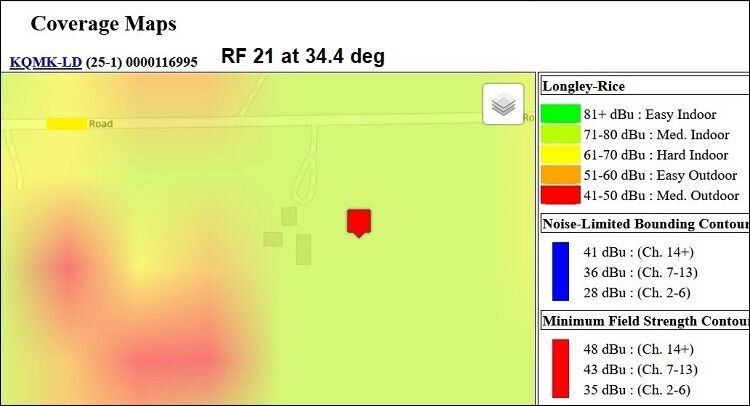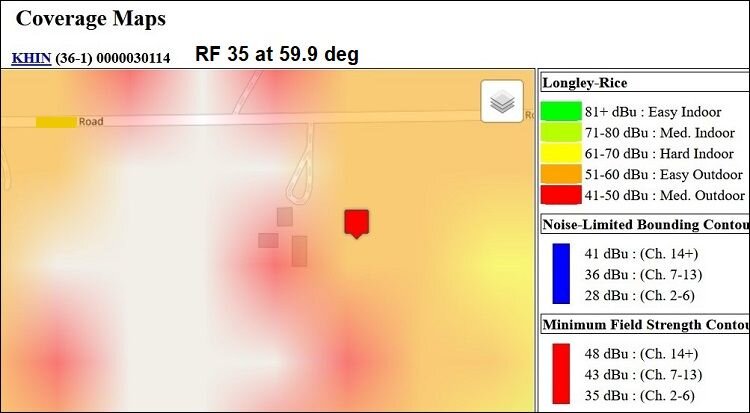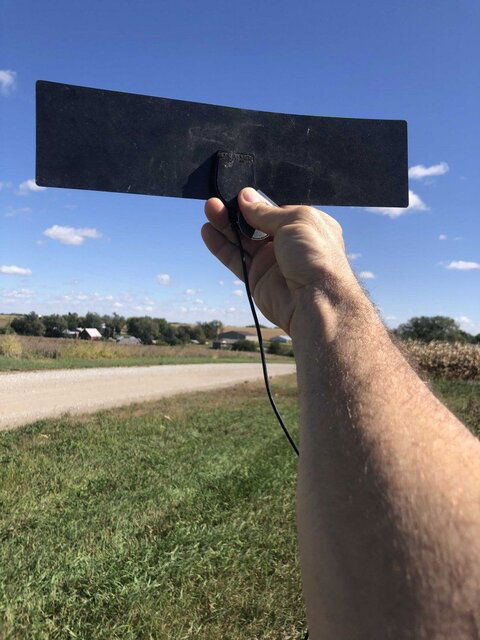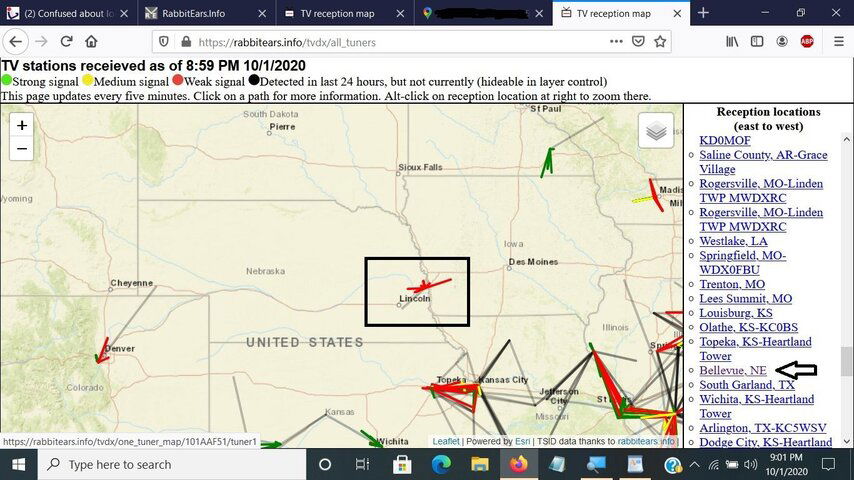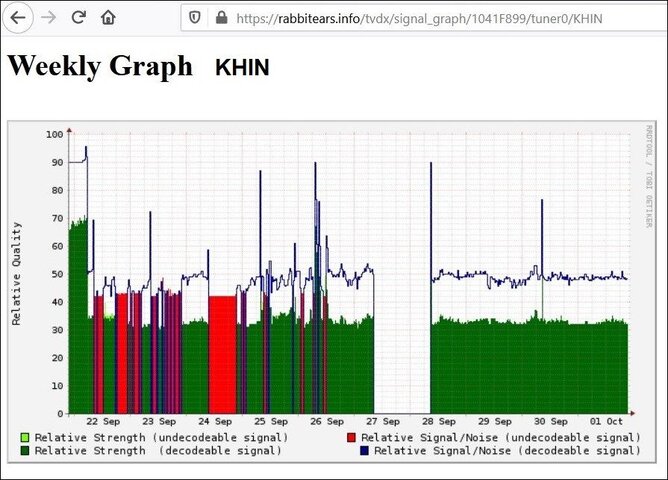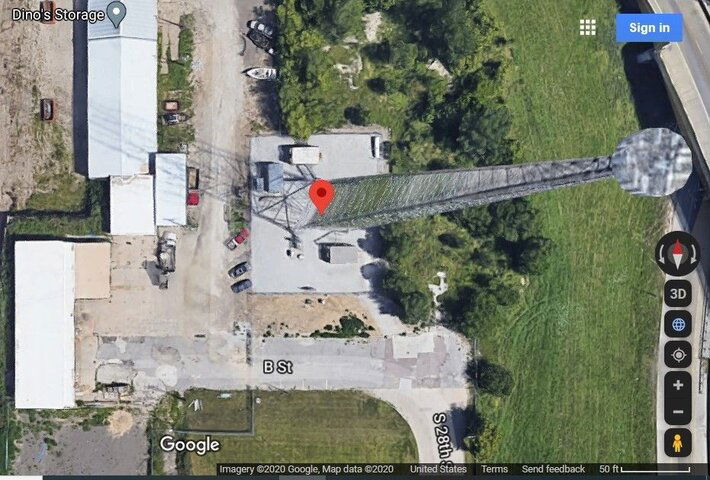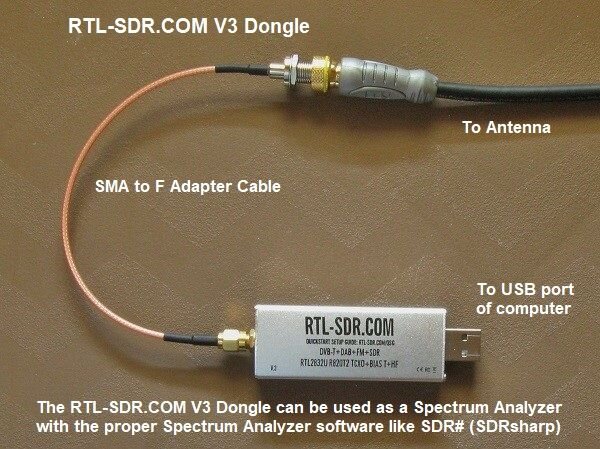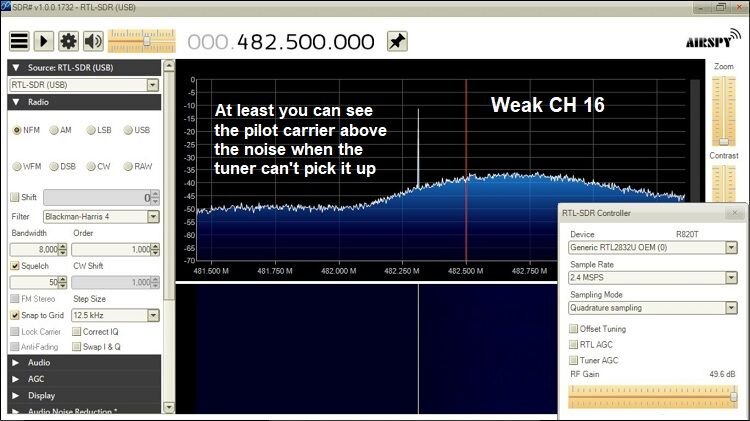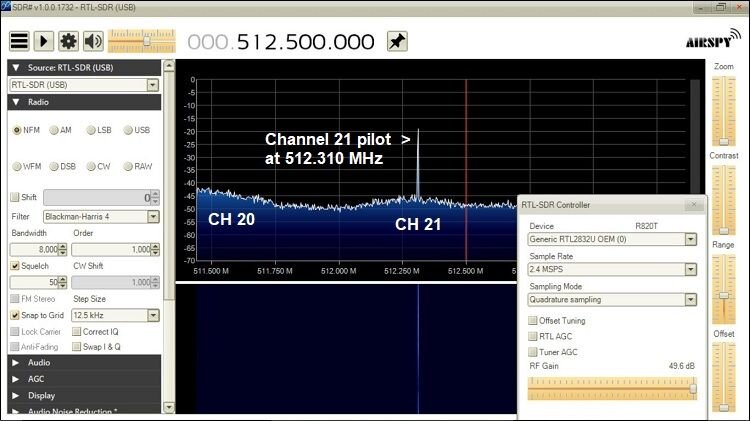I'd like to get KQMK-LD, physical channel 21, virtual 25. Please reference RabbitEars.Info . My working antenna (see complete setup below) is pointed to the NE and I am picking up physical channels (listed in order of field strength) 26, 29, 22, 20, 31, 12, 32, 17, 15, 33, and 35. Channel 21 has a field strength less than 33 and 35, and is in the same general direction. I thought I should be able to pick it up. However, when I look at fccdata.org the station is in a different location on the map: FCCdata.org - powered by REC
There are two locations in fccdata.org. The most recent matches with rabbitears.info, another site marked as pending shows the Ashland, NE location.
Sorry I don't know how to interpret FCC application data. Where is the station right now? To the NE or NW?
My antenna setup is on a 50-foot tower and clears the local terrain by around 15'. I have an RCA ANT3038XR pointed to the NE and a Five Star Yagi 2020 Antenna pointed to the SE. They are combined with a Wineguard CC-7870 and then into a Wineguard pre-amp on mast. Currently the cables from the antenna to the combiner are not correct, they are of different lengths and pretty sure the cable to the Five Star is damaged. As soon as the wind dies down around here I'm going to replace with equal length cables. I'd like to have an idea of where to point the Five Star when I'm up on the tower. The SE direction was intended to capture the Lincoln market but turns out I won't grab any networks I don't already have and there is competing physical channels, so I'm going to move it. At least I'll point it in the same direction as the RCA and get some gain. I could point to the NW if that's really where KQMK-LD is. I'll have my phone so I can re-scan my DVR while I'm on the tower to verify my channels.
Fairly new at this, any advice is appreciated.
There are two locations in fccdata.org. The most recent matches with rabbitears.info, another site marked as pending shows the Ashland, NE location.
Sorry I don't know how to interpret FCC application data. Where is the station right now? To the NE or NW?
My antenna setup is on a 50-foot tower and clears the local terrain by around 15'. I have an RCA ANT3038XR pointed to the NE and a Five Star Yagi 2020 Antenna pointed to the SE. They are combined with a Wineguard CC-7870 and then into a Wineguard pre-amp on mast. Currently the cables from the antenna to the combiner are not correct, they are of different lengths and pretty sure the cable to the Five Star is damaged. As soon as the wind dies down around here I'm going to replace with equal length cables. I'd like to have an idea of where to point the Five Star when I'm up on the tower. The SE direction was intended to capture the Lincoln market but turns out I won't grab any networks I don't already have and there is competing physical channels, so I'm going to move it. At least I'll point it in the same direction as the RCA and get some gain. I could point to the NW if that's really where KQMK-LD is. I'll have my phone so I can re-scan my DVR while I'm on the tower to verify my channels.
Fairly new at this, any advice is appreciated.


